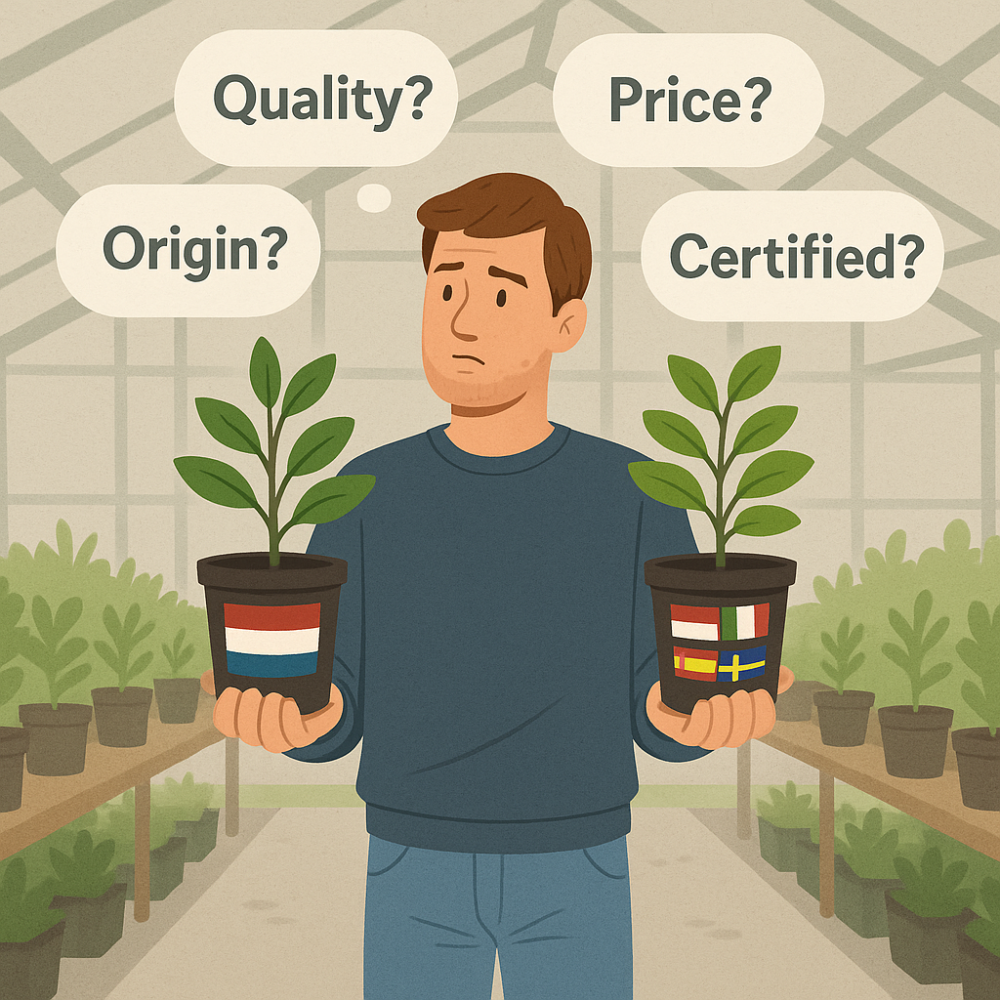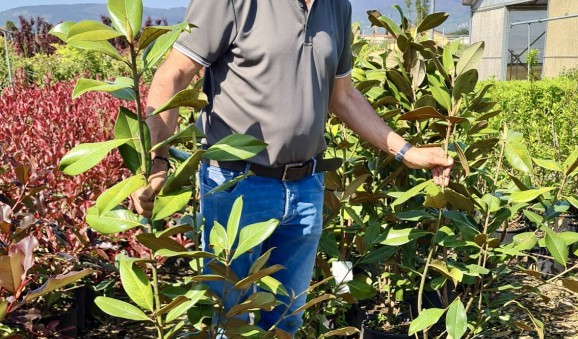The True Cost of Cheap Plant Material

The import of young plant material from countries such as Poland, Italy, and Spain is rapidly increasing. Prices are low, and the supply is plentiful. For growers under pressure from rising costs, this may seem appealing. But what exactly are you buying for a lower price? And what risks are involved in terms of varietal purity, delivery reliability, legal protection, and marketability? Cheap plant material is not necessarily bad – but it requires knowledge, control, and strategic insight. Those who focus solely on the purchase price may later face plant loss, certification issues, or buyers who reject the material.
In this dossier, divided into two articles, we examine four crucial factors: long-term quality & cost, and legal protection & sales opportunities. We spoke with growers, suppliers, and license holders who operate in these challenging areas daily.
What Does the Price Say About the Quality of Young Plant Material?
Growers seek certainty: well-rooted, uniform material, free from diseases and pests, with clear provenance, and preferably proven varieties. This is where cheap imported material often falls short. “There is good material from abroad,” insiders say, “but you need to know exactly what you're ordering.” In propagation, genetic purity, provenance, and varietal identity play a major role. Breeders, such as those represented by Van Vliet New Plants, also warn of infringements on plant breeders’ rights: “In countries where enforcement is weak, protected varieties are propagated without licenses. This makes the material cheaper but undermines the entire breeding system.” For buyers like Staatsbosbeheer or retailers who value varietal purity, sustainability, and provenance, this can be detrimental. Autochthonous and certified plant material, as supplied by companies like NL Plants, is increasingly becoming a requirement. We discussed this with owner Marc Lodders to clarify the issue. “We see that price is not the decisive factor, but reliability and origin are,” he says.
Quality Starts in the Soil
Our nurseries here in Zundert all grow on light sandy soils. With a few exceptions, that’s already a major difference. The soil structure allows us to cultivate plants with a fine-branched root system. Most plants are undercut or transplanted before delivery. That’s usually not the case abroad. Plants from heavier soils have a very different root structure. Also, the root collars are less tightly packed during sorting, making automatic planting unfeasible. That requires extra handling.
Genetic Certainty Is Crucial
All plants we use in forestry or landscaping come with a provenance certificate. It's crucial to avoid any mix-ups. When buying abroad, we do so only if we’ve seen the plants at the nursery or know they understand exactly what’s meant. The same applies to seed purchases.
Climate Compatibility and Ecosystem Impact
You can have Dutch-origin plants grown in another climate. When returned, they’ll perform well due to matching genetics. But if you import plants of different genetic composition from another climate, issues can arise—like poor pollination due to absence of suitable insects. The whole ecosystem can be disrupted. That may not be visible during cultivation, but future generations will see the consequences.
Preventing Losses Starts with Selection
We know the market and what we’re buying, so we rarely have complaints. If issues do arise, they’re resolved through communication with the supplier. Visiting the nurseries beforehand is essential to align expectations.
Certified Assurance Through Naktuinbouw
Sometimes we lose orders due to price comparisons that don’t account for certification. But we explain that every order for native or forestry plants is accompanied by a provenance certificate. Naktuinbouw inspects our nurseries and verifies that the paperwork matches the actual plants. Clients can double-check with Naktuinbouw. Last season, we issued nearly 7,000 such certificates.
Is Cheap Plant Material Truly Cheaper in the Long Run?
The main driver behind import is price. But when costs like losses, inspections, or material adjustments are considered, cheap can turn into costly. We spoke with Antonello Tagliabue of Jac. Niekerk, who supplies Italian plant material and emphasizes quality and certification over volume.
Control Starts with the Supply Chain
“We work with reliable Italian partners who are themselves checked by license agencies,” he says. “Even for non-licensed varieties, we know our suppliers well and can filter out the unreliable ones.”
A Supply Chain Built on Experience
“Because we’ve worked with the same companies for years, we know what to expect,” Tagliabue explains. “Delivery reliability is openly communicated, and clients are notified on time if substitutions are needed.”
Transparency on Risks and Phytosanitary Regulations
“We’re transparent about risks. If a new virus emerges, nobody can guarantee protection, but collaboration with Italian authorities helps. For example, in areas with Popillia japonica, nurseries must grow under cover and cover pots with gravel or mats. If not, they can’t sell—even within Italy.”
Fair Competition Also Comes at a Cost
“Contrary to what some think, foreign growers don’t avoid regulations. In fact, compliance costs can be high, especially in phytosanitary zones,” says Tagliabue.
Not on Price, But on Specialization
“We avoid price-driven bulk sales by offering niche or fast-growing varieties suited to warmer climates. That’s how we distinguish ourselves,” he concludes.
Conclusion
Those who opt for cheap young plant material from abroad must know exactly what they are doing. The price advantage is tempting, but misjudging the quality, genetics, or traceability can lead to serious setbacks—financially, legally, and ecologically. In the second part of this series, we’ll explore the legal risks surrounding breeders' rights and the importance of certification for market access.
